140 have author last names that start with B have author last names that start with B
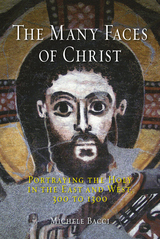
Taking into account a broad spectrum of iconographic and textual sources, Michele Bacci describes the process of creating Christ’s image against the backdrop of ancient and biblical conceptions of beauty and physicality as indicators of moral, ascetic, or messianic qualities. He investigates the increasingly dominant role played by visual experience in Christian religious practice, which promoted belief in the existence of ancient documents depicting Christ’s appearance, and he shows how this resulted in the shaping of portrait-like images that were said to be true to life. With glances at analogous progressions in the Jewish, Muslim, Buddhist, Hindu, Jain, and Taoist traditions, this beautifully illustrated book will be of interest to specialists of Late Antique, Byzantine, and medieval studies, as well as anyone interested in the shifting, controversial conceptions of the historical figure of Jesus Christ.
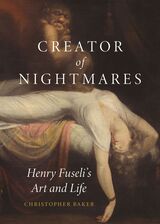
Henry Fuseli (1741–1825) was one of the eighteenth century’s most provocative and inventive artists. He is best known for his painting The Nightmare, which channeled a new form of gothic imagery for the Romantic age. This engaging study of the artist’s career unveils Fuseli’s complexities, navigating contradictions between literary and painted works, sacred and secular themes, and traditional patronage versus competitive exhibitions. Plotting Fuseli’s trajectory from Zurich to Paris, Rome, and ultimately London, Creator of Nightmares paints an image of Fuseli as an astute marketer and self-proclaimed genius who transformed himself from a priest to an Enlightenment writer, a mercurial force in the art world, and finally a revered teacher.
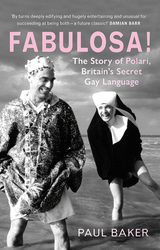
“Richly evocative and entertaining.”—Guardian
“An essential book for anyone who wants to Polari bona!”—Attitude
“Exuberant, richly detailed. . . . A delightful read.”—Tatler
Polari is a language that was used chiefly by gay men in the first half of the twentieth century. It offered its speakers a degree of public camouflage and a means of identification. Its colorful roots are varied—from Cant to Lingua Franca to dancers’ slang—and in the mid-1960s it was thrust into the limelight by the characters Julian and Sandy, voiced by Hugh Paddick and Kenneth Williams, on the BBC radio show Round the Horne (“Oh hello Mr Horne, how bona to vada your dolly old eek!”). Paul Baker recounts the story of Polari with skill, humor, and tenderness. He traces its historical origins and describes its linguistic nuts and bolts, explores the ways and the environments in which it was spoken, explains the reasons for its decline, and tells of its unlikely reemergence in the twenty-first century. With a cast of drag queens and sailors, Dilly boys and macho clones, Fabulosa! is an essential document of recent history—a fascinating and fantastically readable account of this funny, filthy, and ingenious language.
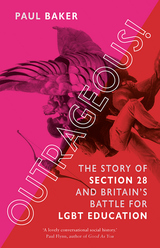
On May 23, 1988, Paul Baker sat down with his family to eat cake on his sixteenth birthday while The Six O’Clock News played in the background. But something was not quite right. There was muffled shouting—“Stop Section 28!”—and a scuffle. The papers would announce: “Beeb Man Sits on Lesbian.”
The next day Section 28 passed into UK law, forbidding local authorities from teaching “of the acceptability of homosexuality as a pretended family relationship.” It would send shockwaves through British society: silencing gay pupils and teachers, while galvanizing mass protests and the formation of the LGBTQ+ rights groups OutRage! and Stonewall.
Outrageous! tells its story: the background to the Act, how the press fanned the flames and what politicians said during debates, how protestors fought back to bring about the repeal of the law in the 2000s, and its eventual legacy. Based on detailed research, interviews with key figures—including Ian McKellen, Michael Cashman, and Angela Mason—and personal recollection, Outrageous! is an impassioned, warm, often moving account of unthinkable prejudice enshrined within the law and of the power of community to overcome it.

Along with Jack Kerouac and Allen Ginsberg, William S. Burroughs (1914––97) is an iconic figure of the Beat generation. In William S. Burroughs, Phil Baker investigates this cult writer’s life and work—from small-town Kansas to New York in the ’40s, Mexico and the South American jungle, to Tangier and the writing of Naked Lunch, to Paris and the Beat Hotel, and ’60s London—alongside Burrough’s self-portrayal as an explorer of inner space, reporting back from the frontiers of experience.
After accidentally shooting his wife in 1951, Burroughs felt his destiny as a writer was bound up with a struggle to come to terms with the “Ugly Spirit” that had possessed him. In this fascinating biography, Baker explores how Burroughs’s early absorption in psychoanalysis shifted through Scientology, demonology, and Native American mysticism, eventually leading Burroughs to believe that he lived in an increasingly magical universe, where he sent curses and operated a “wishing machine.” His lifelong preoccupation with freedom and its opposites—forms of control or addiction—coupled with the globally paranoid vision of his work can be seen to evolve into a larger ecological concern, exemplified in his idea of a divide between decent people or “Johnsons” and those who impose themselves upon others, wrecking the planet in the process.
Drawing on newly available material, and rooted in Burroughs’s vulnerable emotional life and seminal friendships, this insightful and revealing study provides a powerful and lucid account of his career and significance.
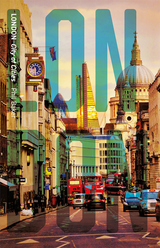
In this book, Londoner Phil Baker explores the city’s history and the London of today, balancing well-known major events with more curious and eccentric details. He reveals a city of almost unmatched historical density and richness. For Baker, London turns out to be Gothic in all senses of the word and enjoyably haunted by its own often bloody past. And despite extensive redevelopment, as he shows in this engaging and insightful book, some of the magic remains.


In Feeling Persecuted, Anthony Bale explores the medieval Christian attitude toward Jews, which included a pervasive fear of persecution and an imagined fear of violence enacted against Christians. As a result, Christians retaliated with expulsions, riots, and murders that systematically denied Jews the right to religious freedom and peace. Through close readings of a wide range of sources, Bale exposes the perceived violence enacted by the Jews and how the images of this Christian suffering and persecution were central to medieval ideas of love, community, and home. The images and texts explored by Bale expose a surprising practice of recreational persecution and show that the violence perpetrated against medieval Jews was far from simple anti-Semitism and was in fact a complex part of medieval life and culture.
Bale’s comprehensive look at medieval poetry, drama, visual culture, theology, and philosophy makes Feeling Persecuted an important read for anyone interested in the history of Christian-Jewish relations and the impact of this history on modern culture.
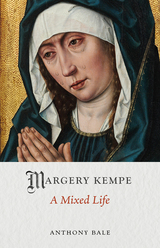
This is a new account of the medieval mystic and pilgrim Margery Kempe. Kempe, who had fourteen children, traveled all over Europe and recorded a series of unusual events and religious visions in her work The Book of Margery Kempe, which is often called the first autobiography in the English language. Anthony Bale charts Kempe’s life and tells her story through the places, relationships, objects, and experiences that influenced her. Extensive quotations from Kempe’s Book accompany generous illustrations, giving a fascinating insight into the life of a medieval woman. Margery Kempe is situated within the religious controversies of her time, and her religious visions and later years put in context. And lastly, Bale tells the extraordinary story of the rediscovery, in the 1930s, of the unique manuscript of her autobiography.

Ballantyne examines a crucial aspect of Ruskin’s thinking: the notion that art and architecture have moral value. Telling the story of Ruskin’s childhood and enduring devotion to his parents—who fostered his career as a writer on art and architecture—he explores the circumstances that led to Ruskin’s greatest works, such as Modern Painters, The Seven Lamps of Architecture, The Stones of Venice, and Unto This Last. He follows Ruskin through his altruistic ventures with the urban poor, to whom he taught drawing, motivated by a profound conviction that art held the key to living a worthwhile life. Ultimately, Ballantyne weaves Ruskin’s story into a larger one about Victorian society, a time when the first great industrial cities took shape and when art could finally reach beyond the wealthy elite and touch the lives of everyday people.

With its distinctive gables and arches, Tudor-style architecture is recognized around the world as a symbol of British culture; it represents the idea of home to British citizens in the United Kingdom and abroad. Some love it, others hate it, but the Tudoresque is still being built—to give a house an old-fashioned air or to create a sense of exotica. Yet few people know anything about how Tudor Revival buildings came to be. To fill this gap is Tudoresque, an insightful book that explores the origin of the style, tracing its roots to the antiquarian enthusiasms of the eighteenth century.
It looks at the Tudoresque cottage style, which later influenced 1930s architecture, and the Tudor-style manor house, particularly favored in the nineteenth century. While the style has been discouraged since the 1920s (and is especially reviled by modernists) it continues to be a popular choice—particularly when the architect doesn’t have the upper hand. The authors here show how the style is the mainstream of twentieth-century British architecture and explore how it has travelled abroad. From Tudor Village in Queens to Stan Hywet Hall in Akron to Malaysia, Shanghai, and Singapore, Tudor Revival has found a comfortable home across the globe. These black and white gabled buildings are important not so much because they are great architecture, but because they are everywhere.
Illustrated with images from more than 200 years of the Tudor Revival, and including examples from Britain, America, India and East Asia, this knowledgable and entertaining book will be an indispensable guide to the one of the world’s most iconic architectural styles.
Bamford’s book is the first to consider Lyotard’s work and ideas in the wider context of his life and times. He unravels the thrust of Lyotard’s main philosophical arguments, his struggle with thinking, and his confrontation with the task of writing and thinking differently about philosophy. Bamford takes care to situate each of these in their particular context: the Algerian war; the experimental university at Vincennes; and within Lyotard’s sustained engagement with the visual arts. The philosopher’s own suspicion of easy narratives and rejection of self-determination help to frame the book. It is only by following these prescribed cautions that Bamford is able to present a compelling portrait of a challenging subject.

While surveying the artist’s life, Banai establishes that Klein’s brilliance was, above all, performative, revealing that he created and inhabited myriad public identities: bourgeois, judo expert, painter, avant-garde artist, collaborator, politician, fascist, and showman, among others. With each persona, Banai shows, Klein invented new ways to communicate his paradoxical message of spiritual enlightenment and Dada iconoclasm to a rapt and unsuspecting audience. Illuminating the many facets of Klein’s influential artistic career, Yves Klein is an invaluable introduction to the inventor of the inimitable International Klein Blue.

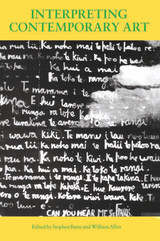
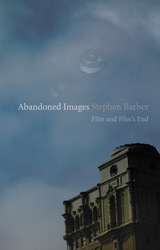
Broadway Avenue in downtown Los Angeles contains an extraordinary collection of twelve abandoned film palaces, all built between 1910 and 1931. In most cities worldwide such a concentration of original cinema houses would have been demolished long ago—but in a city whose identity is inseparable from the film industry, the buildings have survived mainly intact, some of their interiors dilapidated and gutted and others transformed and re-imagined as churches and nightclubs. Stephen Barber’s Abandoned Images takes us inside these remarkable structures in order to understand the birth and death of film as both a medium and a social event.
Due to the rise of digital filmmaking and straight-to-DVD and on-demand distribution, the film industry is presently undergoing a process of profound transformation in both how movies are made and how they are watched. Barber explores what this means for the cinematic experience: Are movies losing some essential element of their identity and purpose, and can the distinctive aura of film survive when the specialized venues required to display movies have been comprehensively overhauled or erased? Barber also forecasts the future of film, revealing how its distinctive and flexible nature will be vital to its survival.
Featuring many evocative images alongside insightful reflections on the role of film and its viewing in the global culture, Abandoned Images will be of interest to all those engaged in contemporary developments in film, visual media, and digital arts.
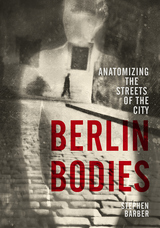
Spanning the twentieth century and moving up to today, Barber’s book offers a unique account of Berlin’s development. He explores previously neglected material from the city’s audio and visual archives to examine how people interacted with the city’s streets, buildings, squares, and public spaces. He recounts a history of riots, ruins, nightclubs, crowds, architectural experiments, citywide spectacles, film, art, and performances, showing how these human forces have affected the structure of the city. Through this innovative approach, Barber offers a new way to think about modern urban spaces as corporeal spaces, and how people exert a cumulative effect on cities over time.
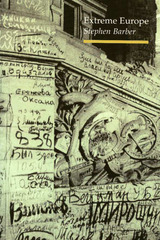
Barber sets out to explore and define Europe's political and conceptual edges, first making a circuit eastwards through Albania to Turkey, then south- and westwards along the Mediterranean coast, with stops in Crete and Marseille. The book's two other sections move, first, through several decades of history as they can be read in both the surviving and the transformed fabrics of Berlin, and, finally, through the frayed, disaffected multicultural landscapes of Paris's outer suburbs.
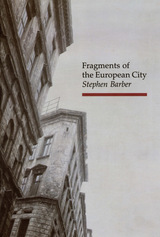
Taking as its subject the "intricately assembled, relentlessly disassembling metropolitan screen", it charts the virulent implosions of culture, the distortions and violence that give city-living its fractured and hallucinatory quality.
Provocatively written as a series of inter-locking poetic fragments, the text evokes the formation of metropolitan "identity" as it ricochets between the physical surface of the city and the vulnerable but manipulating consciousness of city dwellers.
Barber has discovered a powerful new vocabulary – a vocabulary charged with the visual and sonic impact of the cinema. Like the city, the text pulsates, creatively chaotic, raw and exhilarating.

Drawing from a wide range of examples—including filmic depictions of German and Japanese and Chinese performance art and street cultures—Stephen Barber argues that the act of filming has the power to draw distinctively performative dimensions out of unruly human gatherings, such as riots and political protests, while also accentuating the outlandish and aberrant aspects of performance. Spanning the history of film, Barber moves from performance in film’s formative years, such as Edward Muybridge’s work in the 1880s, to contemporary performance artworks—for example, Rabih Mroué’s investigations of the often lethal camera phone filming of snipers in Syrian cities. Proposing that the future conception of filmed performance needs to be radically expanded in response to the transformations of digital film cultures, Performance Projections is a critical addition to the literature on both film and art history.
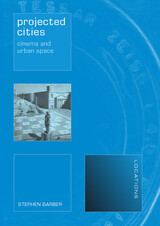

Abandoned, arrested, and repeatedly incarcerated, Genet, who died in 1986, led a life that could best be described as a tour of the underworld of the twentieth century.
Similarly, Genet's work is recognized by its nearly obsessive and often savage treatment of certain recurring themes. Sex, desire, death, oppression, domination-these ideas, central to Genet's artistic project, can be seen as preoccupations that arose directly from the artist's travels, imprisonments, sexual and emotional relationships, and political engagements and protests. This trenchant volume focuses directly on the moments in Genet's life in which those preoccupations are vividly projected in his novels, theater works, and film projects.
Genet's works have been hugely influential for a vast array of writers, filmmakers, choreographers, and directors, especially at moments of social crisis; thus Genet's life is not only at the root of his own work but also that of many important artists of the twentieth century. With its frank and illuminating introduction by Edmund White, Jean Genet gives readers access to this brilliant and brutal mind.

Country houses are quintessentially English, not only architecturally but also in that they embody national values of continuity and insularity. The English country house, however, has more often been the site of violent disruption than continuous peace. So how is it that the country how came to represent an uncomplicated, nostalgic vision of English history? This book explores the evolution of the country house, beginning with the Reformation and Civil War, and shows how the political events of the eighteenth century, which culminated in the reaction against the French Revolution, led to country houses being recast as symbols of England’s political stability.

Erasmus of Rotterdam came from an obscure background but, through remarkable perseverance, skill, and independent vision, became a powerful and controversial intellectual figure in Europe in the early sixteenth century. He was known for his vigorous opposition to war, intolerance, and hypocrisy, and at the same time for irony and subtlety that could confuse his friends as well as his opponents. His ideas about language, society, scholarship, and religion influenced the rise of the Reformation and had a huge impact on the humanities, and that influence continues today. This book shows how an independent textual scholar was able, by the power of the printing press and his wits, to attain both fame and notoriety. Drawing on the immense wealth of recent scholarship devoted to Erasmus, Erasmus of Rotterdam is the first English-language popular biography of this crucial thinker in twenty years.

As Barnes shows, Michelangelo’s works were made to be viewed in churches, homes, and political settings, by people who brought their own specific needs and expectations to them. Rarely were his paintings and sculptures viewed in quiet isolation—as we might today in the stark halls of a museum. Instead, they were an integral part of ritual and ceremonies, and viewers would have experienced them under specific lighting conditions and from particular vantages; they would have moved through spaces in particular ways and been compelled to relate various works with others nearby. Reconstructing some of the settings in which Michelangelo’s works appeared, Barnes reassembles these experiences for the modern viewer. Moving throughout his career, she considers how his audience changed, and how this led him to produce works for different purposes, sometimes for conventional religious settings, but sometimes for more open-minded patrons. She also shows how the development of print and art criticism changed the nature of the viewing public, further altering the dynamics between artist and audience.
Historically attuned, this book encourages today’s viewers to take a fresh look at this iconic artist, seeing his work as they were truly meant to be seen.
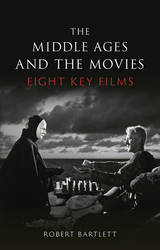
In The Middle Ages and the Movies, eminent historian Robert Bartlett takes a fresh, cogent look at how our view of medieval history has been shaped by eight significant films of the twentieth century. The book ranges from the concoction of sex and nationalism in Mel Gibson’s Braveheart, to Fritz Lang’s silent epic Siegfried, the art-house classic The Seventh Seal, and the epic historical drama El Cid. Bartlett examines the historical accuracy of these films, as well as other salient aspects—how was Umberto Eco’s Name of the Rose translated from page to screen? Why is Monty Python and the Holy Grail funny? And how was Eisenstein’s Alexander Nevsky shaped by the Stalinist tyranny under which it was filmed?
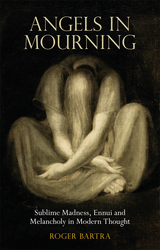


Chromophobia has been a cultural phenomenon since ancient Greek times; this book is concerned with forms of resistance to it. Writers have tended to look no further than the end of the nineteenth century. David Batchelor seeks to go beyond the limits of earlier studies, analyzing the motivations behind chromophobia and considering the work of writers and artists who have been prepared to look at color as a positive value. Exploring a wide range of imagery including Melville's "great white whale", Huxley's reflections on mescaline, and Le Corbusier's "journey to the East", Batchelor also discusses the use of color in Pop, Minimal, and more recent art.
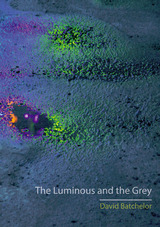
The Luminous and the Grey explores the places where color comes into being and where it fades away, probing when it begins and when it ends both in the imagination and in the material world. Batchelor draws on neuroscience, philosophy, novels, films, and artists’ writings—as well as his own experience as an artist working with color—to understand how we see and use colors. He considers the role of color in creation myths, industrial chemistry, and optics, and examines the particular forms of luminosity that saturate the modern city. Following this inquiry into the hues that we face every day, he turns to one that is both color and noncolor: grey itself, which he reveals is as much a mood, feeling, and existential condition as a shade that we experience with our eyes.
Deftly argued, always thought-provoking, and ever entertaining, The Luminous and the Grey is a beautiful study of how we see and feel our multicolored world.

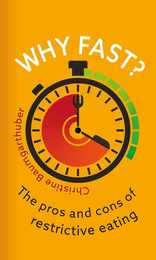
Fasting from food is a controversial, dangerous, and yet utterly normal human practice. In Why Fast?, Christine Baumgarthuber engages our fascination with restrictive eating in cultural history. If fasting offers few health benefits, why do people fast? Why have we always fasted? Does fasting speak to something deep and immutable within us? Why are our bodies so well adapted to intermittent fasting? And, what might this ancient, ascetic ritual offer us today? Thoughtful and considered, Why Fast? is a sober reconsideration of a contentious practice.
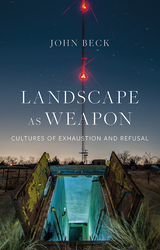
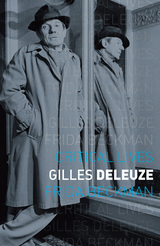
Beckman follows Deleuze from the salons of his early student years through his popularity as a young teacher to the extraordinarily productive phases of his philosophical work. She examines his life at the experimental University of Paris VIII and his friendships with people like Michel Foucault and Félix Guattari, and she considers how Deleuze’s philosophical developments resonate with historical, political, and philosophical events from World War II to the student uprisings in the 1960s to the Israeli/Palestinian conflict. Beckman ultimately highlights the ways that Deleuze’s legacy has influenced many branches of contemporary philosophy, offering a rich portrait of a contemporary philosopher who wrestled with some of philosophy’s most fundamental questions in fresh and necessary ways.

In Women Artists in Midcentury America, readers embark on a journey spanning two decades, delving into the evolving social and artistic landscapes through the lens of all-women exhibitions. These groundbreaking projects courageously confronted issues of sexual and racial discrimination, igniting profound discussions about women’s roles within modernism and democracy. Looking closely at the inception and reception of these exhibitions by curators, artists, critics, and the public, the book sheds light on the remarkable contributions of numerous artists, from Ruth Asawa to Marguerite Zorach. By foregrounding the accomplishments of women artists during a conservative period overshadowed by the feminist movement of the 1970s, Daniel Belasco provides a fresh perspective on the complex history of women’s art in America and its significance in the broader art world.
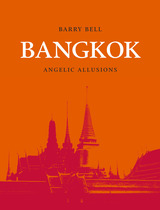
Bangkok: Angelic Allusions uses the tangible artifacts of the city, its topography, streets and monuments, as vehicles for speculating on Bangkok and its central mythologies. Significant in themselves, these physical objects or categories also bring structure to other more perceptual observations and speculations. Ultimately the book links the city’s hectic urban sensibility to its more elusive and mysterious character, the dream of Bangkok which lurks within its physical reality.

From mangosteen fruit discovered in a colonial Indonesian marketplace to caviar served on the high seas in a cruise liner’s luxurious dining saloon, The Food Adventurers narrates the history of eating on the most coveted of tourist journeys: the around-the-world adventure. The book looks at what tourists ate on these adventures, as well as what they avoided, and what kinds of meals they described in diaries, photographs, and postcards. Daniel E. Bender shows how circumglobal travel shaped popular fascination with world cuisines while leading readers on a culinary tour from Tahitian roast pig in the 1840s, to the dining saloon of the luxury Cunard steamer Franconia in the 1920s, to InterContinental and Hilton hotel restaurants in the 1960s and ’70s.
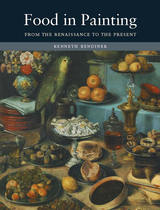
Bendiner outlines the history of these paintings, charting changes in both meaning and presentation since the early Renaissance. The sixteenth century saw great innovations in food subjects, but, as Bendiner reveals, it was Dutch food painting of the seventeenth century that created the visual vocabulary still operative today. Alongside paintings that feature food as the central subject, he also considers topics ranging from Renaissance menus to aphrodisiacs to bottled water to the portrayal of dogs at the table—always with an eye towards how the meaning of food imagery is determined by such factors as myth, religion, and social privilege. Bendiner also treats purely symbolic portrayals of food, both as marginal elements in allegorical paintings and as multi-layered sexual references in Surrealist works.
Packed full of images of markets, kitchens, pantries, picnics, and tables groaning under the weight of glorious feasts, Food in Painting serves up a delicious helping of luxuriously painted meals certain to win a spot on the shelves of art lovers and gastronomes alike.

Saving the World tells the forgotten history of climatic botany, the idea that forests are essential for creating and recycling rain. Long before the specter of global warming, societies recognized that deforestation caused drastic climate shifts—as early as 1770, concerns over deforestation spurred legislation to combat human-induced climate change. Across the twentieth century, climatic botany experienced fluctuating fortunes, influenced by technological advancements and evolving meteorological theories. Remarkably, contemporary scientists are rediscovering the crucial role of forests in rainfall recycling, unaware of the long history of climatic botany. This enlightening book is essential reading for anyone passionate about conserving the world’s forests and preserving our climate for future generations.
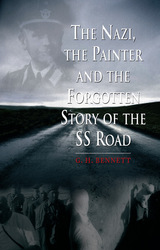
In 2006 a long-forgotten canister of film was discovered in a church in Devon, a county located in the southwestern corner of the United Kingdom. No one knew how it had gotten there, but its contents were tantalizing—the grainy black and white footage showed members of the German SS and police building a road in Ukraine and Crimea in 1943. The BBC caused a sensation when it aired the footage, but the film gave few clues to the protagonists or their task.
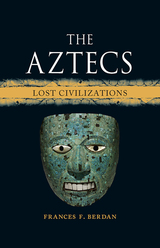
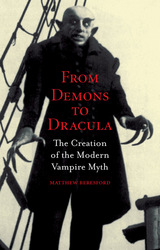
Beresford’s chronicle roams from the mountains of Eastern Europe to the foggy streets of Victorian England to Hollywood, as he investigates the portrayal of the vampire in history, literature, and art. Opening with the original Dracula, Vlad the Impaler, and his status as a national hero in Romania, he endeavors to winnow out truths from the complex legend and folklore. From Demons to Dracula tracks the evolution of the vampire as an icon and supernatural creature, drawing on classical Greek and Roman myths, witch trials and medieval plagues, Gothic literature, and even contemporary works such as Anne Rice’s Interview with a Vampire and Elizabeth Kostova’s The Historian. Beresford also looks at the widespread impact of screen vampires from television shows, classic movies starring Bela Lugosi and Christopher Lee, and more recent films such as Underworld and Blade. Whether as a demon of the underworld or a light-fearing hunter of humans, the vampire has endured through the centuries, the book reveals, as powerfully symbolic figure for human concerns with life, death, and the afterlife.
A wide-ranging and engrossing chronicle, From Demons to Dracula casts this blood-thirsty nightstalker as a remarkably complex and telling totem of our nightmares, real and imagined.
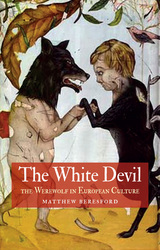


This compelling history traces the evolution of the embassy, from its ancient origins to its enduring presence in the modern world. Beginning with its precursors in antiquity, the book explores the embassy’s emergence on the cusp of the Italian Renaissance, its pinnacle during the nineteenth century, and its navigation through the challenges of twentieth-century conference diplomacy. G. R. Berridge investigates how this European institution adapted its staffing, architecture, and communication methods to changing international landscapes, including the tumultuous wars of religion and encounters in the Far East. He also describes the expansion of the embassy’s responsibilities, such as providing diplomatic cover for intelligence operations. Infused with vibrant anecdotes of remarkable individuals and the creation of influential family dynasties, and illustrated throughout, this book offers a fascinating exploration of the embassy’s rich history.

With Loti’s financial and artistic success came notoriety, which he delighted in enhancing by staging elaborate costume balls—to which (as one does) he invited the photographic press. The artistically inclined royalty of his day, including Princess Alice of Monaco and Queen Elizabeth of Rumania, sought him out as confidant. Sarah Bernhardt had him write plays for her. And although his parties and hobnobbing with titled nobility hurt his standing as a serious author in his later years, they can do nothing to diminish the legacy of an artist whom Henry James hailed as a “remarkable genius,” “the companion, beyond all others, of my own selection,” and whose writing led Willa Cather to confess “she would swoon with joy if anyone saw traces of Loti in her work.”

Born in the Jewish quarter of his beloved Vienna, Schoenberg left Austria for his early career in Berlin as a leading light of Weimar culture, before being forced to flee in the dead of night from Hitler’s Third Reich. He found himself in the United States, settling in Los Angeles, where he would inspire composers from George Gershwin to John Cage. Introducing all of Schoenberg’s major musical works, from his very first compositions, such as the String Quartet in D Major, to his invention of the twelve-tone method, Berry explores how Schoenberg’s revolutionary approach to musical composition incorporated Wagnerian late Romanticism and the brave new worlds of atonality and serialism. Essential reading for anyone interested in the music and history of the twentieth century, this book makes clear Schoenberg changed the history of music forever.


A decimated Shiite shrine in Iraq. The smoking World Trade Center site. The scorched cityscape of 1945 Dresden. Among the most indelible scars left by war is the destroyed landscapes, and such architectural devastation damages far more than mere buildings. Robert Bevan argues herethat shattered buildings are not merely “collateral damage,” but rather calculated acts of cultural annihilation.
From Hitler’s Kristallnacht to the toppling of Saddam Hussein’s statue in the Iraq War, Bevan deftly sifts through military campaigns and their tactics throughout history, and analyzes the cultural impact and catastrophic consequences of architectural destruction. For Bevan, these actions are nothing less than cultural genocide. Ultimately, Bevan forcefully argues for the prosecution of nations that purposely flout established international treaties against destroyed architecture.
A passionate and thought-provoking cri de coeur, The Destruction of Memory raises questions about the costs of war that run deeper than blood and money.
“The idea of a global inheritance seems to have fallen by the wayside and lessons that should have long ago been learned are still being recklessly disregarded. This is what makes Bevan’s book relevant, even urgent: much of the destruction of which it speaks is still under way.”—Financial Times Magazine
“The message of Robert Bevan’s devastating book is that war is about killing cultures, identities and memories as much as it is about killing people and occupying territory.”—Sunday Times
“As Bevan’s fascinating, melancholy book shows, symbolic buildings have long been targeted in and out of war as a particular kind of mnemonic violence against those to whom they are special.”—The Guardian

Bevan combs through world history to highlight a range of wars and conflicts in which the destruction of architecture was pivotal. From Cortez’s razing of Aztec cities to the carpet bombings of Dresden and Tokyo in World War II to the war in the former Yugoslavia, The Destruction of Memory exposes the cultural war that rages behind architectural annihilation, revealing that in this subliminal assault lies the complex aim of exterminating a people. He provocatively argues for “the fatally intertwined experience of genocide and cultural genocide,” ultimately proposing the elevation of cultural genocide from “collateral damage” to a crime punishable by international law.

Though more than sixty years have passed since the signing of the proclamation of the State of Israel, the impact of that epochal event continues to shape the political policies and public opinion of not only the Middle East but much of the world. The consequent conflict between Arabs and Israelis for sovereignty over the land of Palestine has been one of the most bloody, intractable, and drawn-out of modern times. It continues today in cycles of aggressive violence followed by temporary, tenuous ceasefires that are marked and complicated by resolute opinions and fractious religious ideologies. In this timely volume, noted military historian Ian J. Bickerton cuts through the complex perspectives in order to explain this struggle in objective detail, describing its history from the dissolution of the Ottoman Empire following World War I to the present day.
In concise and clear prose, Bickerton argues that the present problem can be traced to the fact that each side is trapped by a conception of their past from which they seem unable to break free. This attachment and reaction to history has had a negative influence on the decision-making of Arabs and Israelis since 1948. Ultimately, Bickerton maintains that the use of armed force has not, and will not, resolve the issues that have divided Israelis and Arabs.
The Arab-Israeli Conflict is a plea for reasoned diplomacy in a situation that has been dominated by extreme violence. This book will appeal to a wide general audience seeking a balanced understanding of this enduring struggle that still dominates headlines.
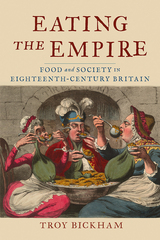

Bear draws on cultural material from around the world to examine the various legends and myths surrounding the bear, including ceremonies and taboos that govern the hunting, killing, and eating of bears. The book also looks at the role of bears in modern culture as the subjects of stories, songs, and films; as exhibited objects in circuses and zoos; and, perhaps most famously, as toys. Bieder also considers the precarious future of the bear as it is threatened by loss of habitat, poaching, global warming, and disease and discusses the impact of human behavior on bears and their environments.
Accompanied by numerous vibrant photographs and illustrations, and written in an engaging fashion, Bear is an appealing and informative volume for anyone who has curled up with Winnie-the-Pooh or marveled at this powerful king of the forest.
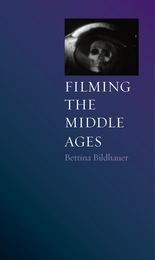
In this groundbreaking account of film history, Bettina Bildhauer shows how from the earliest silent films to recent blockbusters, medieval topics and plots have played an important but overlooked role in the development of cinema.
Filming the Middle Ages is the first book to define medieval films as a group and trace their history from silent film in Weimar Germany to Hollywood and then to recent European co-productions. Bildhauer provides incisive new interpretations of classics like Murnau’s Faust and Eisenstein’s Alexander Nevsky, and she rediscovers some forgotten works like Douglas Sirk’s Sign of the Pagan and Asta Nielsen’s Hamlet. As Bildhauer explains, both art house films like The Seventh Seal and The Passion of Joan of Arc and popular films like Beowulf or The Da Vinci Code cleverly use the Middle Ages to challenge modern ideas of historical progress, to find alternatives to a print-dominated culture, and even to question what makes us human. Filming the Middle Ages pays special attention to medieval animated and detective films and provactively demonstrates that the invention of cinema itself is considered a return to the Middle Ages by many film theorists and film makers.
Filming the Middle Ages is ideal reading for medievalists with a stake in the contemporary and film scholars with an interest in the distant past.
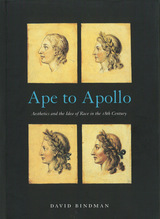
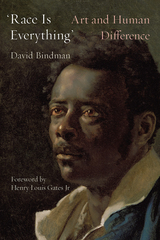
‘Race Is Everything’ explores the spurious but influential ideas of so-called racial science in the nineteenth and the first half of the twentieth centuries, and how art was affected by it. David Bindman looks at race in general, but with particular concentration on attitudes toward and representations of people of African and Jewish descent. He argues that behind all racial ideas of the period lies the belief that outward appearance—and especially skull shape, as studied in the pseudoscience of phrenology—can be correlated with inner character and intelligence, and that these could be used to create a seemingly scientific hierarchy of races. The book considers many aspects of these beliefs, including the skull as a racial marker; ancient Egypt as a precedent for Southern slavery; Darwin, race, and aesthetics; the purported “Mediterranean race”; the visual aspects of eugenics; and the racial politics of Emil Nolde.
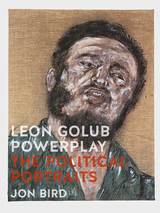
Bird and Perry examine the ways Golub increasingly explored the effects of power upon the body through facial expressions, gestures, and poses, and how he invested his characters with psychological tension and depth. As they show, Golub always derived his source material from media representations, aiming to capture the way power—whether political, military, or social—is mediated through the camera lens. This “look of power” is the dominant characteristic of the portraits included here, all painted as part of his Political Portraits series of the 1970s, which captured historical figures—ranging from Fidel Castro and Henry Kissinger to Pinochet and Mao Tse-Tung—at various stages of their public office. With a narrative of arrogance and venality traced clearly across the face, these portraits forcefully show that power is uncompromising. The result is a startling collection of faces, arrestingly rendered through Golub’s signature, visceral style.

Bird brings a novel approach to his dissection of Tarkovsky’s wholly original techniques and sensibilities, arranging the films into elemental categories of Water, Fire, Earth, and Air. Solaris, Ivan’s Childhood, Mirror, Nostalgia, Andrei Rublev, and Sacrifice all get their due here; through them, Bird explores how the filmmaker probed the elusive correlation between cinematic representation and a more primeval perception of the world. Though the book also considers Tarkovsky’s work in radio, theatre, and opera—as well as his work as an actor, screenwriter, and film theorist—Bird throughout keeps his focus firmly on Tarkovsky as a consummate filmmaker.

Crime and Punishment, The Brothers Karamazov, Demons, The Idiot—the complex and prolific Fyodor Dostoevsky (1821–81) is responsible for some of our greatest literary works and most fascinating characters. Praised by the likes of Ernest Hemingway, James Joyce, and Virginia Woolf, he is also acknowledged by critics to be a preeminent writer of psychological fiction and a precursor of the twentieth-century existentialism. Set in the troubled political and social world of nineteenth-century Russia, Dostoevsky’s stories were shaped by the great suffering and difficult life the author himself experienced. Robert Bird explores these influences in this new biography of the prominent Russian author.
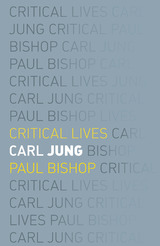
Paul Bishop follows Jung from his early childhood to his years at the University of Basel and his close relationship—and eventual break—with Sigmund Freud. Exploring Jung’s ideas, Bishop takes up the psychiatrist’s suggestion that “the tragedies of Goethe’s Faust and Nietzsche’s Thus Spoke Zarathustra . . . mark the first glimmerings of a breakthrough of total experience in our Western hemisphere,” engaging with Jung’s scholarship to offer one of the fullest appreciations yet of his distinctive approach to culture. Bishop also considers the role that the Red Book, written between 1914 and 1930 but not published until 2009, played in the progression of Jung’s thought, allowing Bishop to provide a new assessment of this divisive personality. Jung’s attempt to synthesize the different parts of human life, Bishop argues, marks the man as one of the most important theorists of the twentieth century.
Providing a compelling examination of the life of this highly influential figure, the concise and accessible Carl Jung will find a place on the shelves of students, scholars, and both clinical and amateur psychologists alike.


Black works from the startling premise that the United States is a continent pretending to be a country. He examines the cultural clashes—and the tense harmony—between the numerous regional cultures uneasily contained within the United States’ wide bounds. Suburban sprawl, the triumph of consumerism, the war over health care, immigration, and Christian evangelicalism all play a part in these pages, as Black unravels the tangled web of American life during the past forty-five years. He locates such tensions in the tug-of-war between the unitary and divisive pressures that have always defined the character of American government, and in the alternating rise and fall of individualism and conformity in American society as well. Black also has some telling new reflections on America’s role abroad, from Nixon’s Vietnam to George W. Bush's Iraq.
Drawing on travels from Virginia to California to Alaska, Black deftly reveals in Altered States the less-examined aspects of American culture as they are manifested in its diverse peoples and landscapes from coast to coast.
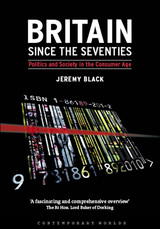
Black’s account of contemporary Britain challenges as well as entertains, seeking to engage the reader in the process of interpretation. Through the lens of the last three decades, the author unveils his image of a country in which uncertainty, contingency and change are the defining features. In charting the impact of increasing individualism, longevity and secularization, Black is drawn repeatedly to examine a fundamental paradox of modern Britain: "At the start of both century and millennium, the British were more prosperous than ever before, but . . . happiness has not risen with prosperity."
Britain since the Seventies is a wide-ranging and cogent evaluation of recent British history, and as such will appeal to all those interested in the condition of modern Britain, and how it came to be so, as well as being an ideal introduction for students of the subject.
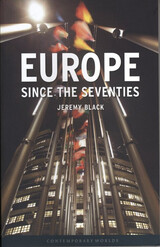
In Europe since the Seventies, Jeremy Black offers a succinct and authoritative analysis of the social and economic development of Europe in recent decades.
While providing a full treatment of environmental, demographic, and cultural issues in Europe, Black also offers delineations of broader political, economic, and social matters discussing practical, immediate subjects like migration, crime, transportation, and the environment. Europe since the Seventies reveals how European society has changed strikingly—former societal lines drawn on the basis of economics and class have given way to lines formed by identity, such as gender, sexual orientation, and ethnicity. Meanwhile, the European Union has created an expanded Europe and is now a testing ground for new forms of economics and politics.
A readable, concise, and timely work, this latest book by a notable European historian will be indispensable to anyone wishing to understand the complexities of present-day Europe.
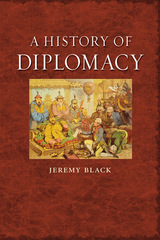
In A History of Diplomacy, historian Jeremy Black investigates how a form of courtly negotiation and information-gathering in the early modern period developed through increasing globalization into a world-shaping force in twenty-first-century politics. The monarchic systems of the sixteenth century gave way to the colonial development of European nations—which in turn were shaken by the revolutions of the eighteenth century—the rise and progression of multiple global interests led to the establishment of the modern-day international embassy system. In this detailed and engaging study of the ever-changing role of international relations, the aims, achievements, and failures of foreign diplomacy are presented along with their complete historical and cultural background.
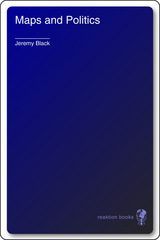

Black argues strenuously that, in order fully to understand recent warfare, we must discard the Cold War narrative that has until now framed the majority of historical inquiry. By treating conflicts—especially those in and between developing nations—on their own terms, he is able to bring proper attention to the wide varieties of force structures, methods, goals, and military cultures that have been employed in post-World War II battles. Rather than recapitulate the familiar assessments that consider improvements in weaponry or increases in the size of armies without adequately weighing the wider context of their uses in specific wars, Black presents an account of warfare that focuses on the actual tasks the military is ordered to undertake. His global coverage of warfare is unparalleled, and his insistence on the centrality of developing nations to this period of military history brings new knowledge to bear on understudied aspects of recent history.
Black brings the book up to date with considerations of the current "war on terror" and the U.S.-led war in Iraq. Timely and accessible, War since 1945 will be essential to anyone who wants to understand the state of warfare in the present day.

Black examines several major modern wars in their historical contexts, taking into account cultural differences and various conflict theories. He analyzes the three main types of war—between cultures, within cultures, and civil—and explores the problems of defining war. Black's investigation inspires fascinating questions such as: Do wars reflect the bellicosity in societies and states, or do they largely arise as a result of a diplomatic breakdown? How closely is war linked to changes in the nature of warfare, the international system, or the internal character of states? Black also considers contemporary situations and evaluates the possible course of future wars. Offering a valuable and thought-provoking analysis on the causes of war and conflicts, Why Wars Happen will interest historians and readers of military history alike.
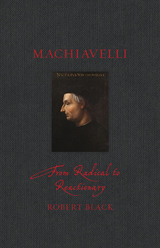
“Machiavellian” can signify duplicity and amorality in politics, but Machiavelli himself was far more complex than this cliché. A high-ranking Florentine government official and prolific writer of hugely influential political, military, and historical works, Machiavelli was also a vernacular poet, first-rank dramatist, and religious radical, rejecting not only the contemporary Catholic Church but Christianity itself. From champion of Florentine popular republicanism to political radical to conservative, Machiavelli explores the many facets of the man described as the father of modern political philosophy and political science.
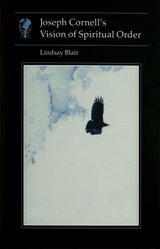
Drawing on the widest range possible of primary material – virtually all Cornell's scrapbooks and source files, as well as correspondence and diaries – supplemented by further details gathered during more than fifty interviews undertaken with the artist's family and acquaintances, including Robert Motherwell and Susan Sontag, Lindsay Blair gives us the most detailed picture yet of an artist who hid so much of his life from the world. Her conclusion, wholly convincing in the light of the evidence she provides, is that Cornell's ultimate subject was the mind itself.
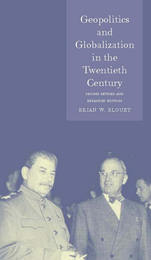
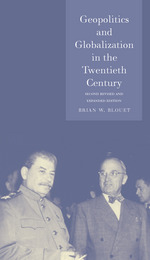
Geopolitics and Globalization in the Twentieth Century looks at the struggle between the processes of globalization and the forces of geopolitics over the last 150 years. The twentieth century witnessed conflicts between geopolitical states who wanted to close off and control land, resources, and population—like Nazi Germany and the former Soviet Union—and globalizing ones who wished to open up the world to the free flow of ideas, goods and services—like Britain and America. Geopolitics and Globalization describes and analyzes the tug-of-war between these two tendencies, the results of which have determined the shape and behavior of the world we live in today.
Beginning his survey in the late nineteenth century, Brian W. Blouet, in this revised and expanded second edition, brings his analysis up to the present day, when communication technologies are no longer land- or sea-based, and thus render globalization nearly inevitable.
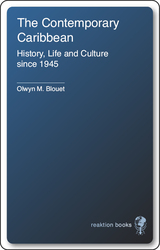
When Americans seek an escape from the worries and dilemmas of everyday life, the crystal blue waters and white sands of the Caribbean islands seem like the answer to a prayer. Yet this image of a tourist’s paradise hides a tumultuous history marked by strife and division over race, political power, and economic inequality. Olwyn Blouet explores the story of “the Caribbean” over the last 50 years, revealing it to be a region positioned at the heart of some the most prominent geopolitical issues of modern times.
Navigating a rich mélange of cultures and histories, Blouet unearths a complex narrative that is frequently overlooked in histories of the Americas. In stark contrast to widely-read guidebooks, this chronicle unflinchingly probes two strikingly different worlds in the Caribbean islands—those of the haves and the have-nots—created by the volatile mixture of colonial politics, racial segregation, and economic upheaval. The strategic political relations between Caribbean nations, Cuba in particular, and the world powers during the Cold War; the economic transformations instigated by tourism; and the modernizing efforts of Caribbean nations in order to meet the demands of a globalizing twenty-first century market are among the numerous issues explored by Blouet in her efforts to redress the historical record’s imbalance. The Contemporary Caribbean also explores the proud histories of the region's many nations in sports such as cricket and baseball, as well as their famed cuisines, and the uneasy balance today between local traditions and the vestiges of colonial influence.

At a time when vaccines are a vital tool in the fight against COVID-19 in all its various mutations, this hard-hitting book takes a longer historical perspective. It argues that globalization and cuts to healthcare have been eroding faith in the institutions producing and providing vaccines for more than thirty years. It tells the history of immunization from the work of early pioneers such as Louis Pasteur and Robert Koch through the eradication of smallpox in 1980, to the recent introduction of new kinds of genetically engineered vaccines. Immunization exposes the limits of public health authorities while suggesting how they can restore our confidence. Public health experts and all those considering vaccinations should read this timely history.
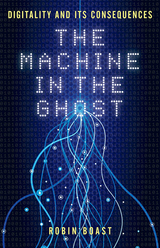
Boast tackles this fundamental question by exploring the origins of the digital and showing how digital technology works. He goes back to 1874, when a French telegraph engineer, Jean-Maurice-Émile Baudot, invented the first means of digital communication, the Baudot code. From this simple 5-bit code, Boast takes us to the first electronic computers, to the earliest uses of graphics and information systems in the 1950s, our interactions with computers through punch cards and programming languages, and the rise of digital media in the 1970s.Via various and sometimes unanticipated historical routes, he reveals the foundations of digitality and how it has flourished in today’s explosion of technologies and the forms of communication and media they enable, making real the often intangible force that guides so much of our lives.
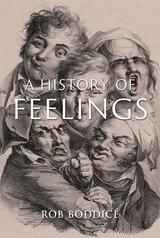
A History of Feelings is a compelling account of the unsaid—the gestural, affective, and experiential. Arguing that how we feel is the dynamic product of the existence of our minds and bodies in moments of time and space, Boddice uses a progressive approach that integrates biological, anthropological, and social and cultural factors, describing the transformation of emotional encounters and individual experiences across the globe. The work of one of the world’s leading scholars of the history of emotions, this epic exploration of our affective life will fascinate, enthrall, and move all of us interested in our own well-being—anyone with feeling.
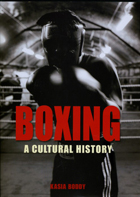


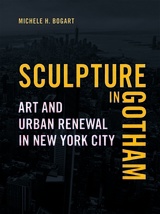
Focusing on specific people, agencies and organizations, and both temporary and permanent projects, from the 1960s forward, Michele H. Bogart reveals the changing forms and meanings of municipal public art. Sculpture in Gotham illustrates how such shifts came about at a time when art theories and styles were morphing markedly, and when municipalities were reeling from racial unrest, economic decline, and countercultural challenges—to culture as well as the state. While sculptural installations on New York City property took time and were not without controversy, Gotham’s processes and policies produced notable results, providing precedents and lessons for cities the world over.
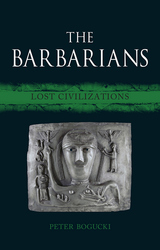
We often think of the civilizations of ancient Greece and Rome as discrete incubators of Western culture, places where ideas about everything from government to art to philosophy were free to develop and then be distributed outward into the wider Mediterranean world. But as Peter Bogucki reminds us in this book, Greece and Rome did not develop in isolation. All around them were rural communities who had remarkably different cultures, ones few of us know anything about. Telling the stories of these nearly forgotten people, he offers a long-overdue enrichment of how we think about classical antiquity.
As Bogucki shows, the lands to the north of the Greek and Roman peninsulas were inhabited by non-literate communities that stretched across river valleys, mountains, plains, and shorelines from the Atlantic Ocean in the west to the Ural Mountains in the east. What we know about them is almost exclusively through archeological finds of settlements, offerings, monuments, and burials—but these remnants paint a portrait that is just as compelling as that of the great literate, urban civilizations of this time. Bogucki sketches the development of these groups’ cultures from the Stone Age through the collapse of the Roman Empire in the west, highlighting the increasing complexity of their societal structures, their technological accomplishments, and their distinct cultural practices. He shows that we are still learning much about them, as he examines new historical and archeological discoveries as well as the ways our knowledge about these groups has led to a vibrant tourist industry and even influenced politics. The result is a fascinating account of several nearly vanished cultures and the modern methods that have allowed us to rescue them from historical oblivion.

The book concludes with a tour of Bucharest, whose houses, streets and public monuments embody Romania's traditional values and contemporary contradictions.
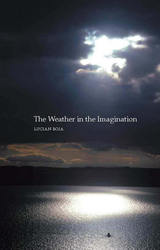
Boia here examines the cultural influence of weather through the lens of anthropology and psychology, history, and catastrophe. He first investigates how human diversity is linked to weather and why people differ according to their native climates. He then looks at how climate can explain the dynamics of historical progress and the rise and fall of civilizations, citing how Nazis used it to justify the superiority of the "Aryan" race. And what can destroy or induce panic in a society more effectively than a good climatic jolt? Boia investigates the social upheaval caused by catastrophic weather conditions, citing the most gripping example in human history, the Biblical Flood.
The Weather in the Imagination is a thought-provoking chronicle of how humans throughout history have been bewildered, infuriated, and often terrified by the weather.
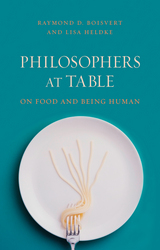
Examining a cornucopia of literary works, myths, histories, and film—not to mention philosophical ideas—the authors make the case for a bona fide philosophy of food. They look at Babette’s Feast as an argument for hospitality as a central ethical virtue. They compare fast food in Accra to the molecular gastronomy of Spain as a way of considering the nature of food as art. And they bite into a slug—which is, unsurprisingly, completely gross—to explore tasting as a learning tool, a way of knowing. A surprising, original take on something we have not philosophically savored enough, Philosophers at Table invites readers to think in fresh ways about the simple and important act of eating.

To collect these stories of deceit, Roelf Bolt travels from ancient times to the present day, documenting a huge assortment of legerdemain: infamous quacks, fraudulent scientists, crooks who committed “pseudocides” by faking their own deaths, and forgers of artworks, design objects, archaeological finds, and documents. From false royal claims, fake dragon’s eggs, and bogus perpetual motion machines to rare books, mermaid skeletons, and Stradivari violins, Bolt reveals that almost everything has been forged or faked by someone at some point in history. His short, accessible narratives in each entry offer biographies and general observations on specific categories of deceit, and Bolt captures an impressive number of famous figures—including Albert Einstein, Cicero, Ptolemy, Ernest Hemingway, François Mitterand, and Marco Polo—as well as people who would have remained anonymous had their duplicity not come to light.
Funny, shocking, and even awe-inspiring, the stories of deception in this catalog of shame make The Encyclopaedia of Liars and Deceivers the perfect gift for all those who enjoy a good tall tale—and those people who like to tell them.

Everyone knows the characters described by Freud in his case histories: “Dora,” the “Rat Man,” the “Wolf Man.” But what do we know of the people, the lives behind these famous pseudonyms: Ida Bauer, Ernst Lanzer, Sergius Pankejeff? Do we know the circumstances that led them to Freud’s consulting room, or how they fared—how they really fared—following their treatments? And what of those patients about whom Freud wrote nothing, or very little: Pauline Silberstein, who threw herself from the fourth floor of her analyst’s building; Elfriede Hirschfeld, Freud’s “grand-patient” and “chief tormentor;” the fashionable architect Karl Mayreder; the psychotic millionaire Carl Liebmann; and so many others? In an absorbing sequence of portraits, Mikkel Borch-Jacobsen offers the stories of these men and women—some comic, many tragic, all of them deeply moving. In total, thirty-eight lives tell us as much about Freud’s clinical practice as his celebrated case studies, revealing a darker and more complex Freud than is usually portrayed: the doctor as his patients, their friends, and their families saw him.
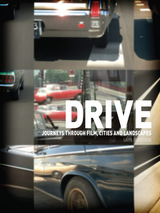
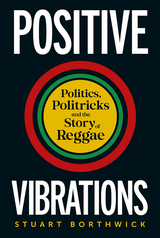
Positive Vibrations tells of how reggae was shaped by, and in turn helped to shape, the politics of Jamaica and beyond, from the rudies of Kingston to the sexual politics and narcotic allegiances of the dancehall. Insightful and full of incident, it explores how the music of a tiny Caribbean island has worked its way into the heart of global pop.
From Marcus Garvey’s dreams of Zion, through ska and rocksteady, roots, riddims, and dub, the story closes with the Reggae Revival, a new generation of Rastas as comfortable riding rhythms in a dancehall style as they are singing sweet melodies from times gone by. Impeccably informed, vibrant, and heartfelt, Positive Vibrations is a passionate and exhaustive account of the politics in reggae, and the reggae in politics.

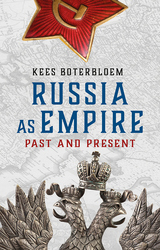
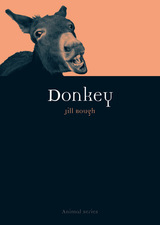
Though donkeys have historically been among our most useful domesticated animals—from plowing fields to navigating difficult terrain—they have been much maligned in popular culture and given very little respect. So much so, that their perceived qualities of stupidity and stubbornness have made their way into the language of insult. But in Donkey, Jill Bough champions this humble creature, proving that after 10,000 years of domestication, this incredibly hard-working animal deserves our appreciation.
Bough reveals the animal’s historic significance in Ancient Egypt, where it was once highly regarded—even worshipped. However, this elevated status did not endure in Ancient Greece and Rome, where donkeys were denigrated, ridiculed, and abused. Since that time, donkeys have continued to be associated with the poorest and most marginalized in human societies. All that time and all over the world, donkeys continue to be used for innumerable tasks, and even today, donkeys are considered to be one of the best draught animals in developing nations, where they continue to make a vital contribution. Bough rounds out her account with a look at the variety of social, cultural, and religious meanings that donkeys have embodied, especially in literature and art.
With accounts that are both fascinating and touching, this cultural history of the donkey will inspire a new respect and admiration for this essential creature.

Disgrace is the first truly global history of sexual violence. The book explores how sexual violence varies widely across time and place, from nineteenth-century peasant women in Ireland who were abducted as a way of forcing marriage, to date-raped high-school students in twentieth-century America, and from girls and women violated by Russian soldiers in 1945 to Dalit women raped by men of higher castes today. It delves into the factors that facilitate violence—including institutions, ideologies, and practices—but also gives voice to survivors and activists, drawing inspiration from their struggles. Ultimately, Joanna Bourke intends to forge a transnational feminism that will promote a more harmonious, equal, and rape- and violence-free world.

Each chapter explores a different facet of the war and masculinity in depth. Joanna Bourke discovers that those who were dismembered and disabled by the war were not viewed as passive or weak, like their civilian counterparts, but were the focus of much government and public sentiment. Those suffering from disease were viewed differently, often finding themselves accused of malingering.
Joanna Bourke argues convincingly that military experiences led to a greater sharing of gender identities between men of different classes and ages. Dismembering the Male concludes that ultimately, attempts to reconstruct a new type of masculinity failed as the threat of another war, and with it the sacrifice of a new generation of men, intensified.

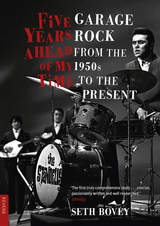
The story begins in 1950s America, when classic rock ’n’ roll was reaching middle age, and teenaged musicians kept its primal rawness going with rough-hewn instrumentals, practicing guitar riffs in their parents’ garages. In the mid-1960s came the Beatles and the British Invasion, and soon every neighborhood had its own garage band. Groups like the Sonics and 13th Floor Elevators burnt brightly but briefly, only to be rediscovered by a new generation of connoisseurs in the 1970s. Numerous compilation albums followed, spearheaded by Lenny Kaye’s iconic Nuggets, which resulted in garage rock’s rebirth during the 1980s and ’90s.
Be it the White Stripes or the Black Keys, bands have consistently found inspiration in the simplicity and energy of garage rock. It is a revitalizing force, looking back to the past to forge the future of rock ’n’ roll. And this, for the first time, is its story.
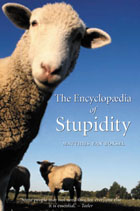
In short sections with such titles as ‘The Blunderers’ Club’, ‘Fools in Hell’, ‘Genealogy of Idiots’, and ‘The Aesthetics of the Empty Gesture’, stupidity is analysed on the basis of fairy tales, cartoons, triumphal arches, garden architecture, Baroque ceilings, jokes, flimsy excuses and science fiction. But Van Boxsel wants to do more than just assemble a ‘shadow cabinet’ of wisdom; he tries to fathom the logic of this opposite world. Where do understanding and intelligence begin and end? He examines mythic fools such as Cyclops and King Midas, cities such as Gotham, archetypes including the dumb blonde, and traditionally stupid animals such as the goose, the donkey and the headless chicken.
Van Boxsel posits that stupidity is a condition for intelligence, that blunders stimulate progress, that failure is the basis for success. In this erudite and witty book he maintains that our culture is the product of a series of failed attempts to comprehend stupidity.

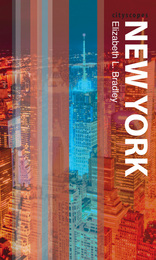
Tracing the development of New York City from a Dutch trading post to the cultural capital of the world, Bradley provides brief histories of each of the five boroughs and introduces the city’s most important—and colorful—personalities. In addition to a rich account of the city’s past, she offers a series of ruminations on themes germane to New York today, describing its natural landmarks, unnatural gin joints, immigrant enclaves, and even its many noises. All along she includes thoughtful, eclectic lists of where to eat, drink, and shop, as well as what to see and do.
Exploring the features that make New York both inimitable and extraordinary, this generously illustrated guide is a lively and engaging look at this ever-shifting archipelago.


Best known for his contribution to the development of the motion picture, Eadweard Muybridge (1830–1904) was a pioneering photographer during his lifetime. Alongside his remarkable photographic achievements, his personal life was riddled with melodrama—including a near-fatal stagecoach accident and a betrayal by his wife that ended with Muybridge being tried for the murder of her lover. Marta Braun’s revealing biography traces the sensational events of Muybridge’s life and his personal reinventions as artist, photographer, researcher, and showman.
In the 1870s, Muybridge’s photography skills were enlisted by Leland Stanford, a racehorse breeder who later founded Stanford University, to prove the “unsupported motion controversy”—the theory that during a horse’s stride, there was a moment when all four of its legs left the ground. The resulting collection of motion studies, as Braun explains, inspired Muybridge to take photography beyond landscapes to the realm of science. He went on to invent the zoopraxiscope, which captures movement too quick for the human eye to record. Most importantly, simulating motion through a series of stills, his pioneering use of sequence photography served as a forerunner to the introduction of cinematography in the 1890s.
This illuminating study examines a man whose influence has resounded through generations. In Eadweard Muybridge, Braun firmly establishes Muybridge’s central contributions to the history of art, science, photography, and motion pictures.
READERS
Browse our collection.
PUBLISHERS
See BiblioVault's publisher services.
STUDENT SERVICES
Files for college accessibility offices.
UChicago Accessibility Resources
home | accessibility | search | about | contact us
BiblioVault ® 2001 - 2024
The University of Chicago Press









